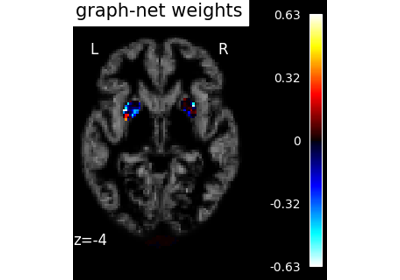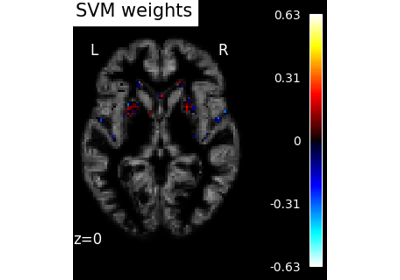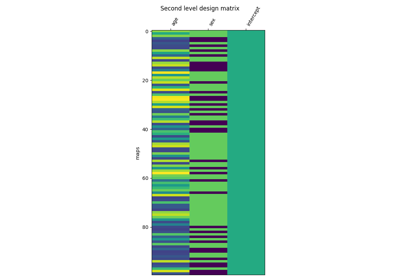Note
This page is a reference documentation. It only explains the function signature, and not how to use it. Please refer to the user guide for the big picture.
nilearn.datasets.fetch_oasis_vbm¶
- nilearn.datasets.fetch_oasis_vbm(n_subjects=None, dartel_version=True, data_dir=None, url=None, resume=True, verbose=1)[source]¶
Download and load Oasis “cross-sectional MRI” dataset (416 subjects).
Data Usage Agreement
Using data available through the OASIS project requires agreeing with the Data Usage Agreement that can be found at https://sites.wustl.edu/oasisbrains/
- Parameters:
- n_subjects
int, default=None The number of subjects to load. If None is given, all the subjects are used.
- dartel_version
bool, default=True Whether or not to use data normalized with DARTEL instead of standard SPM8 normalization.
- data_dir
pathlib.Pathorstror None, optional Path where data should be downloaded. By default, files are downloaded in a
nilearn_datafolder in the home directory of the user. See alsonilearn.datasets.utils.get_data_dirs.- url
stror None, default=None URL of file to download. Override download URL. Used for test only (or if you setup a mirror of the data).
- resume
bool, default=True Whether to resume download of a partly-downloaded file.
- verbose
int, default=1 Verbosity level (0 means no message).
- n_subjects
- Returns:
- dataBunch
Dictionary-like object, the interest attributes are :
‘gray_matter_maps’: string list Paths to nifti gray matter density probability maps
‘white_matter_maps’ string list Paths to nifti white matter density probability maps
‘ext_vars’: pandas.DataFrame Data from the .csv file with information about selected subjects
‘data_usage_agreement’: string Path to the .txt file containing the data usage agreement.
Notes
For more information see the dataset description.
Examples using nilearn.datasets.fetch_oasis_vbm¶

Voxel-Based Morphometry on Oasis dataset with Space-Net prior

